The Vena cava compression syndrome occurs mainly in pregnant women. Changes in the uterus put pressure on the vena cava. The restricted blood return to the heart causes circulatory problems of varying degrees. Outside of pregnancy, vena cava compression syndrome is a sign of a mass in the abdomen.
What is vena cava compression syndrome?
At the Vena cava compression syndrome the undisturbed return of blood from the legs back to the heart is impeded. Pregnant women in particular suffer from it, as the expanding uterus and the weight of the child press on the inferior vena cava. It runs on the right side of the body behind the uterus.
When lying on your back, the entire weight of the uterus presses on the vein and compresses it. The result is vena cava compression syndrome, which the pregnant woman experiences as a circulatory disorder of varying degrees. Although it mainly affects pregnant women, the circulatory disorder, also known as hypertensive syndrome, is also possible in non-pregnant women and men.
The vena cava compression syndrome is then an indication that there may be a diseased tissue enlargement in the abdomen, which builds up a pressure similar to that of the vena cava compression syndrome in a pregnant woman.
causes
The Vena cava compression syndrome is a circulatory disorder caused by mechanical pressure. It starts from the inferior vena cava. This is the inferior vena cava which, as a large blood vessel, receives blood flow from the lower extremities.
It runs on the right side of the body behind the uterus, which normally has no influence on the vena cava when lying on your back. Vena cava compression syndrome only occurs in some pregnant women in this lying position when they enlarge and gain weight during pregnancy.
The weight is then enough to compress the artery. The blood flow to the heart decreases. Blood for onward transport to the lungs and other parts of the body is no longer available in sufficient quantities in vena cava compression syndrome.
Symptoms, ailments & signs
The vena cava compression syndrome is characterized by a sudden drop in blood pressure, profuse sweating, dizziness, cold sweats, nausea, paleness and impaired consciousness. The disturbances in consciousness can lead to unconsciousness. Edema of the legs is also common. In some cases, palpitations occur.
A slower heartbeat is often possible later. In addition, some patients suffer from shortness of breath. However, not all symptoms are always shown. Since the blood circulation is poor, the unborn child can also be affected. The fetus is then no longer adequately supplied with oxygen. In extreme cases, this leads to the child dying in the mother's womb due to circulatory shock to the mother.
However, life-threatening complications are very rare for both mother and child with a lower vena cava compression syndrome. When the upper neck veins are affected by vena cava compression syndrome, the main congestion is the neck veins. Sometimes, however, the veins also protrude on the arms and head.
Those affected then often suffer from headaches. If the swelling or tumor pushes other organs, other symptoms can occur. If the pressure is on the windpipe, breathing problems are in the foreground. When the esophagus is affected, swallowing is the main problem. Without treatment, symptoms of upper vena cava compression syndrome often worsen.
Diagnosis & course
A Vena cava compression syndrome is usually already recognizable by a pregnant woman. The special connection with the lying position on the back is very typical. The examination by the treating gynecologist is usually carried out through precise inquiries into the situation in which the symptoms of the vena cava compression syndrome occur.
The diagnosis for other groups of people is more extensive, since the triggering space demands must be determined more precisely. This absolutely requires the use of imaging procedures. Vena cava compression syndrome requires a reaction from those affected by changing position quickly. The body only reacts initially with dizziness and shortness of breath.
If the interruption in blood flow is not remedied, the circulatory disorders intensify. Consequences of the vena cava compression syndrome are loss of consciousness up to cardiac arrest and endangerment of the unborn child from the oxygen deficiency.
Complications
In the worst case, the vena cava compression syndrome can lead to the death of the patient. This case usually only occurs if the condition is not treated. With this syndrome, those affected suffer from severe dizziness and nausea.
Circulatory problems and fainting spells can also occur and have a very negative effect on the quality of life of the person affected. Many patients are injured when they lose consciousness as a result of a fall. Furthermore, the vena cava compression syndrome leads to palpitations, whereby the affected person can also suffer a heart attack. Difficulty breathing and significantly reduced resilience also occur and significantly limit the patient's everyday life.
If the vena cava compression syndrome occurs in childhood, there are significant restrictions in the child's development. As a result, those affected often suffer from severe limitations and complications even in adulthood. Usually the symptoms of vena cava compression syndrome can be cured. There are no complications. Surgical interventions are only necessary in some cases. Most often, early diagnosis and treatment of the syndrome will not negatively affect the patient's life expectancy.
When should you go to the doctor?
With vena cava compression syndrome, the affected person should usually always see a doctor. This disease cannot cure independently, so treatment must always be carried out. An early diagnosis always has a very positive effect on the further course of the disease.
A doctor should be contacted if the person is sweating profusely and continues to experience dizziness. In some cases this can even lead to a complete loss of consciousness, for which an emergency doctor should be called. Furthermore, severe shortness of breath or a racing heart can indicate the syndrome. People often experience headaches or even head swelling. Difficulty swallowing can also indicate vena cava compression syndrome if they occur over a long period of time and do not go away on their own.
A general practitioner can be seen with this disease. Further treatment then usually takes place in a hospital.
Treatment & Therapy
The Vena cava compression syndrome can usually be prevented or remedied in pregnant women without extensive medical treatment. From the 12th week of pregnancy, the uterus is heavy enough to trigger the hypertensive syndrome.
It is therefore recommended that you take an upright position immediately if symptoms occur. The circulatory disorders usually subside very quickly. The lateral position is much more advantageous and relieves the inferior vena cava. The blood flow to the heart can take place undisturbed. Treatment of vena cava compression syndrome in non-pregnant patients first requires clarifying the cause of the circulatory disorders.
Most of these are tumors in the abdomen. With surgical removal, the pressure on the artery is relieved. In some cases, the patient may have to change the lying position before removal. He must rest in a slightly upright position or at least on his side so that the vena cava compression syndrome cannot occur.
prevention
Prevention at Vena cava compression syndrome mainly affects pregnant women. As early as possible, they do not lie flat on their backs to avoid circulatory disorders. The lateral position is more advantageous, but not permanently maintained. To avoid the symptoms of vena cava compression syndrome even when lying on their back, pregnant women can place a flat pillow under the right side of the body. This creates a slight incline to the left, which slightly displaces the uterus and prevents vena cava compression syndrome.
Aftercare
Since vena cava compression syndrome occurs only during pregnancy, it is a disease or complication that requires follow-up care in the further pregnancy. After the delivery of the child, there are no further consequences or complications for the mother that would be expected from the vena cava compression syndrome.
The vena cava compression syndrome is not to be regarded as an independent disease, but a phenomenon that occurs very often due to pregnancy and normally does not require any follow-up treatment in a healthy patient. Follow-up care is primarily aimed at educating the patient about the cause of the occurrence of the vena cava compression syndrome.
By avoiding an appropriate body position - such as lying on your back for a long time - the blood flow to the heart can be ensured and the symptoms do not recur. As a rule, no further special follow-up care is required, and drug therapy is not necessary.
Immediately after the onset of the vena cava syndrome, however, attention must be paid to repositioning the patient and stabilizing the circulation. Other symptoms that occur usually subside very quickly after repositioning and leave no damage to mother or child.
You can do that yourself
If signs of vena cava compression syndrome appear, it is necessary to consult the gynecologist. The compression of the vena cava requires medical clarification and treatment. Affected women can correct the disease themselves with suitable positioning. The necessary measures should be monitored by a doctor. In severe cases, surgery is necessary.
Women who repeatedly suffer from dangerous compression should go to hospital. As a rule, the responsible gynecologist initiates the further steps. After the surgical procedure, in which the vena cava is relieved, the patient has to take it easy. At the same time, the first childbirth preparations are usually made in order to be prepared in the event of a new vena cava compression syndrome.
Affected women also need support in everyday life because of their pregnancy. If there is no partner, an outpatient care service is a good option. It is also necessary to monitor the physical symptoms. Pressure in the area of the uterus, severe pain, or dizziness indicate a complication. The medical emergency service or the rescue service are suitable contacts. In the event of repeated complaints, temporary hospitalization is recommended until the child is born.

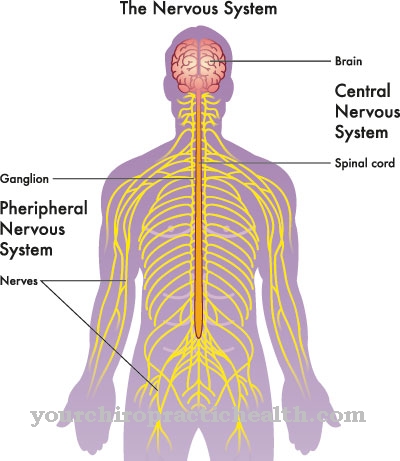
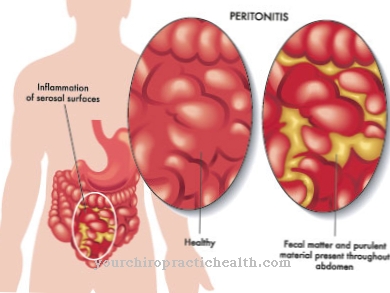
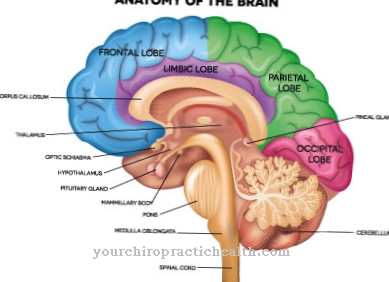
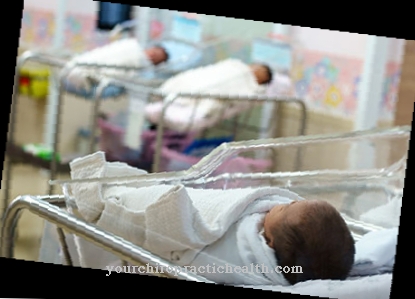

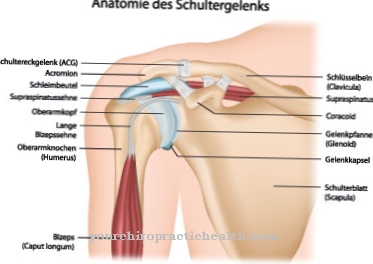

















.jpg)



